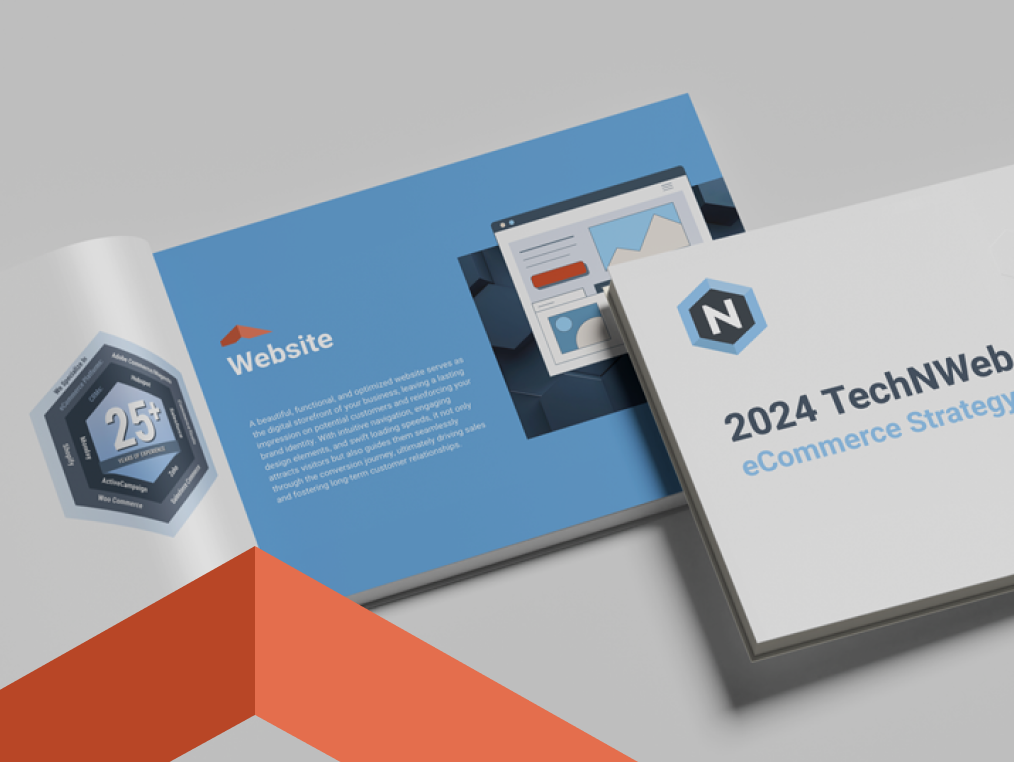3 ways to enhance your customers' mobile shopping experience
 Igor Krasnykh
·
5 minute read
Igor Krasnykh
·
5 minute read

As mobile commerce continues to surge, businesses must prioritize enhancing their customers' mobile shopping experience. The most common mistake we still see in the eCommerce world is that most stores are built for desktop, and mobile is an afterthought. Yet, Semrush’s 2024 report for mobile and desktop usage trends reveals that mobile devices receive more website visitors and unique website visitors compared to desktops. Providing a seamless browsing and purchasing experience for mobile users through responsive design and optimized content is crucial in today’s mobile-first world. By implementing technological innovations, businesses can significantly improve their mobile shopping platforms and drive customer satisfaction and loyalty.
1. Responsive design: the foundation of a seamless mobile experience
Responsive design is a web development approach that ensures a website's layout and content adapt to various screen sizes and devices. It provides a consistent and optimized user experience, regardless of whether customers access your site on a smartphone, tablet, or desktop.
Why is responsive design crucial for mobile commerce?
Enhanced user experience: Responsive design eliminates the need for users to zoom, scroll excessively, or navigate cumbersome layouts. It ensures that your website is easy to use and navigate, which is vital for retaining customers and encouraging purchases.
Improved SEO: Search engines like Google prioritize mobile-friendly websites in their rankings. A responsive design can boost your SEO efforts, making your site more discoverable to potential customers.
Increased conversion rates: A seamless and intuitive mobile experience can significantly increase conversion rates. Customers are more likely to complete purchases when they can effortlessly navigate and interact with your site.
Best practices for responsive design
Prioritize mobile-first design: Start with the mobile version of your site and scale up. It’s essential to decide what content to have on your pages, what should go above the fold, and what copy and CTA should fit on the screen. This approach ensures that the mobile experience is as robust and user-friendly as possible.
Simplify navigation: Use intuitive navigation menus and clear calls to action. Avoid clutter and keep the interface straightforward.
Optimize load times: Mobile users expect fast-loading pages. Optimize images, minimize code, and leverage browser caching to improve load times.

2. Mobile payment solutions: streamline the checkout process
A streamlined and secure checkout process ensures that your customers can quickly take action to purchase your products and services. Mobile payment solutions simplify transactions, reduce cart abandonment, and enhance the overall shopping experience.
There are several benefits to using mobile payment solutions:
- Mobile payment solutions eliminate the need for customers to enter lengthy card details. This convenience leads to higher conversion rates and reduced cart abandonment.
- Digital wallets and mobile payment apps often incorporate advanced security features such as tokenization and biometric authentication, protecting customer data and reducing fraud.
- Mobile payments are typically faster than traditional card payments, enhancing the overall shopping experience and encouraging repeat purchases.
Popular mobile payment solutions
Digital wallets: Services like Apple Pay, Google Wallet, and Samsung Pay allow customers to make payments using their smartphones. These solutions offer convenience and security, as users can complete transactions with a single touch or face recognition.
Mobile banking apps: Many banks offer apps that enable seamless payments directly from customers' bank accounts. These apps provide an added layer of trust and security.
In-app payments: For businesses with mobile apps, integrating in-app payment solutions can further streamline the checkout process. This integration reduces friction and keeps users within the app ecosystem.
Best practices for mobile payment solutions
Offer multiple options: Provide a variety of payment options to cater to different customer preferences. Select reputable mobile payment providers that align with your business needs and customer preferences. Consider factors such as transaction fees, security features, and ease of integration. This flexibility can increase the likelihood of completed transactions.
Simplify checkout: Minimize the number of steps required to complete a purchase. Use one-click payments or save customer payment details for future purchases (with their consent). Ensure that the payment gateway integrates smoothly with your existing eCommerce platform. Test thoroughly to prevent any technical issues that could disrupt the checkout process.
Ensure security: Stay updated with the latest security protocols and compliance standards. Regularly review and update your payment systems to protect customer data. Highlight the benefits and security features to build trust with your customers and encourage adoption.

3. Augmented reality and AI-driven personalization: create an engaging shopping experience
Augmented reality (AR) technology superimposes digital elements onto the real world, providing an interactive and immersive experience. In mobile commerce, AR can bridge the gap between online and offline shopping, allowing customers to visualize products in their environment before making a purchase.
AR creates an interactive and engaging shopping experience, capturing customers' attention and encouraging longer browsing sessions. By allowing customers to see how products will look or fit, AR reduces uncertainty and boosts confidence in purchasing decisions. Implementing AR sets your business apart from competitors, showcasing innovation and a commitment to enhancing the customer experience.
AR applications in mobile shopping
Virtual try-ons: AR enables customers to try on clothing, accessories, and even makeup virtually. This feature helps customers make informed decisions and reduces return rates. For example, customers can virtually try on glasses with Ray-Bans and Sunglass Hut before deciding on a purchase.
Product visualization: Customers can visualize how furniture, home decor, and other products will look in their space. This application is particularly beneficial for large or customizable items.
Interactive packaging: AR can bring product packaging to life, providing additional information, tutorials, or engaging content when scanned with a mobile device.
The power of AI-driven personalization
Artificial intelligence (AI) can analyze vast amounts of data to deliver personalized shopping experiences. Personalization makes customers feel valued and understood, leading to a more enjoyable and relevant shopping experience. AI-driven personalization tailors product recommendations, marketing messages, and user interfaces to individual customers, increasing relevance and satisfaction. AI can also automate various aspects of the shopping experience, from customer support to inventory management, improving efficiency and reducing operational costs.
AI applications in mobile shopping
Personalized recommendations: AI algorithms analyze customer behavior, preferences, and purchase history to suggest products that are most likely to interest them. This personalization can significantly boost sales and customer loyalty.
Dynamic pricing: AI can optimize pricing strategies based on real-time market trends, customer demand, and competitor pricing. This dynamic approach maximizes revenue and ensures competitiveness.
Chatbots and virtual assistants: AI-powered chatbots provide instant customer support, answer queries, and guide users through the shopping process. These virtual assistants enhance customer service and reduce response times.
Best practices for AR and AI-driven personalization
Focus on user experience: Ensure AR and AI features are user-friendly and add genuine value to the shopping experience. Avoid gimmicks that may frustrate or confuse customers. Choose AR and AI solutions that align with your business goals and customer needs. Consider scalability, ease of integration, and support.
Maintain transparency: Be transparent about how customer data is used for personalization. Provide options for customers to control their data and privacy settings.
Monitor performance: Regularly review the performance of AR and AI features. Use analytics to measure their impact on engagement, conversion rates, and customer satisfaction. Gather feedback and make data-driven improvements.

Achieve success on mobile: free eCommerce strategy playbook
Enhancing your customers' mobile shopping experience is essential for staying competitive in the rapidly evolving world of mobile commerce. By implementing responsive design, mobile payment solutions, and leveraging augmented reality and AI-driven personalization, businesses can create a seamless, engaging, and profitable mobile shopping environment. These technologies not only improve user experience but also drive customer loyalty and increase conversion rates. Embrace these innovations to unlock the full potential of your mobile commerce strategy and meet the ever-growing expectations of today's mobile-savvy consumers.
Download our eCommerce strategy playbook for more insights on providing a tailored, user-friendly mobile shopping experience for your customers.
Ready to elevate your mobile shopping experience? Schedule a complimentary consultation with our experts today. We'll help you identify opportunities to improve your site, enhance the shopping experience for your customers, and drive sales. Contact us now to get started on transforming your mobile commerce strategy!



